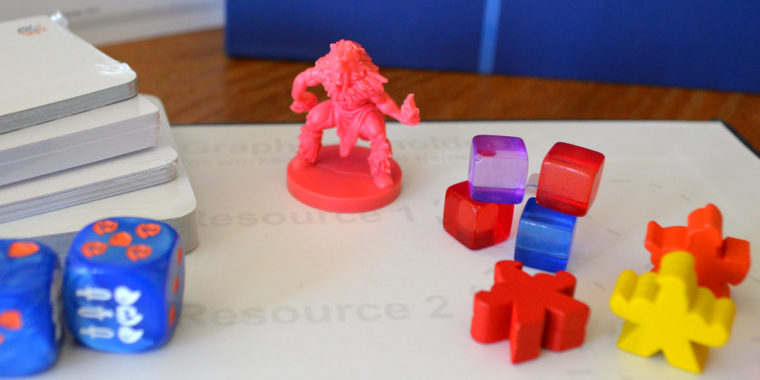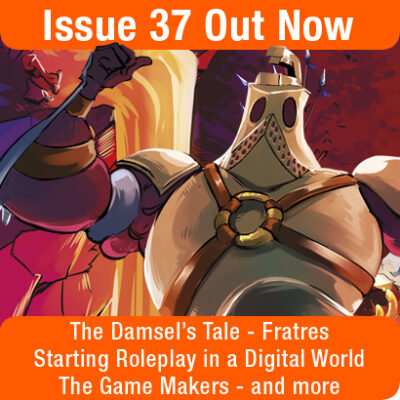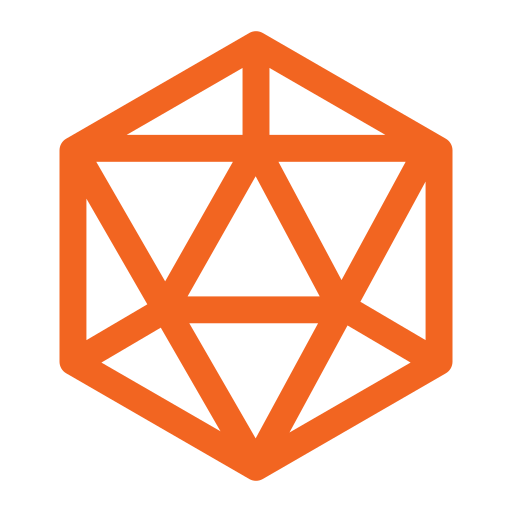If there is one thing game designers love, it is bits for their prototypes. Games in their collection are used just as much to plunder parts as playing. So any opportunity to gather more useful stuff is always looked on favourably.
The Designer’s Kit is created by WinGo. For those not familiar with WinGo the company manufactures games, and game pieces, for a number of publishers worldwide. Cardboard, plastic, or something else, WinGo can work with a number of materials.
It is probably for this reason that they have created the Designer’s Kit. In the box are a selection of cardboard tokens, meeples and cubes as well as two sample dice, a miniature, a board, a coin and a pack of cards of various stocks. The booklet contained in the kit details the boxed elements, how to set them up for WinGo, and in some cases how they are manufactured.
Probably the most important word to take note of here is ‘sample’. While the product is called a kit, and says “This is not a game… yet” on the box, it only contains a handful of items which designers will find useful when working on prototypes. Rather it is, for all intents and purposes, a sample of what WinGo can manufacture.
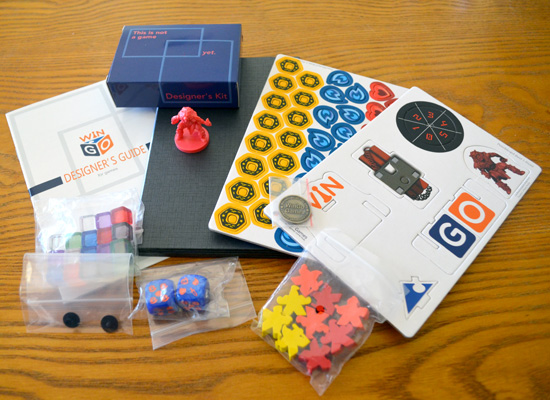
Interestingly, the Designer’s Kit is available for free. You can’t order it, though, rather it is available at conventions where WinGo is exhibiting. This might seem like a strange approach, given the variety of items the kit contains. But I think it is a smart approach.
The number of tabletop games being created has only been growing. On Kickstarter alone the number of campaigns for tabletop increases exponentially each year. And while a large percentage of these don’t fund, most do some research beforehand getting quotes and identifying materials. Combine this with those games being created through traditional avenues, and suddenly providing thousands of samples to clients becomes a serious drain on time and money.
To WinGo the Designer’s Kit is probably an economical way to communicate their services and processes to clients. They get what they can do into prospective client’s hands, in a way which requires minimal management on their end. And the client receives a nicely produced manufacturing sample which may result, in future, in work for WinGo. Certainly a solid plan on WinGo’s end.
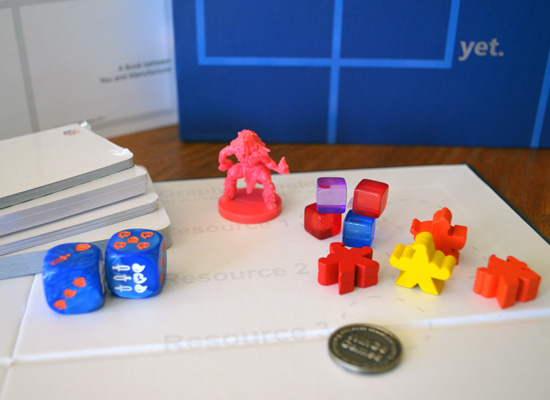
The real question is, who will be interested in the Designer’s Kit? Game designers, for one thing, but not every single one. Some game designers are concerned only with creating a games and selling them to a publisher. The particulars of who is manufacturing the final product, card stocks and plastic types is left up to someone else. To these designers having a wide selection of pieces to use in prototypes is what attracts them, and that is not what the Designer’s Kit has.
But there are those game designers who pursue the self-publishing route. To these people, especially those with little-to-no experience in printing and manufacturing, the Designer’s Kit could be a great introductory product to help familiarise them with the process and requirements. The Designer’s Guide booklet in particular should left demystify how pieces like board and cards are set up, and why the manufacturer has very specific instructions on what is provided.
Let’s be honest though. The kit is free, and so even if a designer can only find one piece of interest in the box, that’s a good outcome. So if bits and pieces is your thing, and you happen to be at a convention where WinGo is giving the Designer’s Kit away, you would be silly not to grab one.


